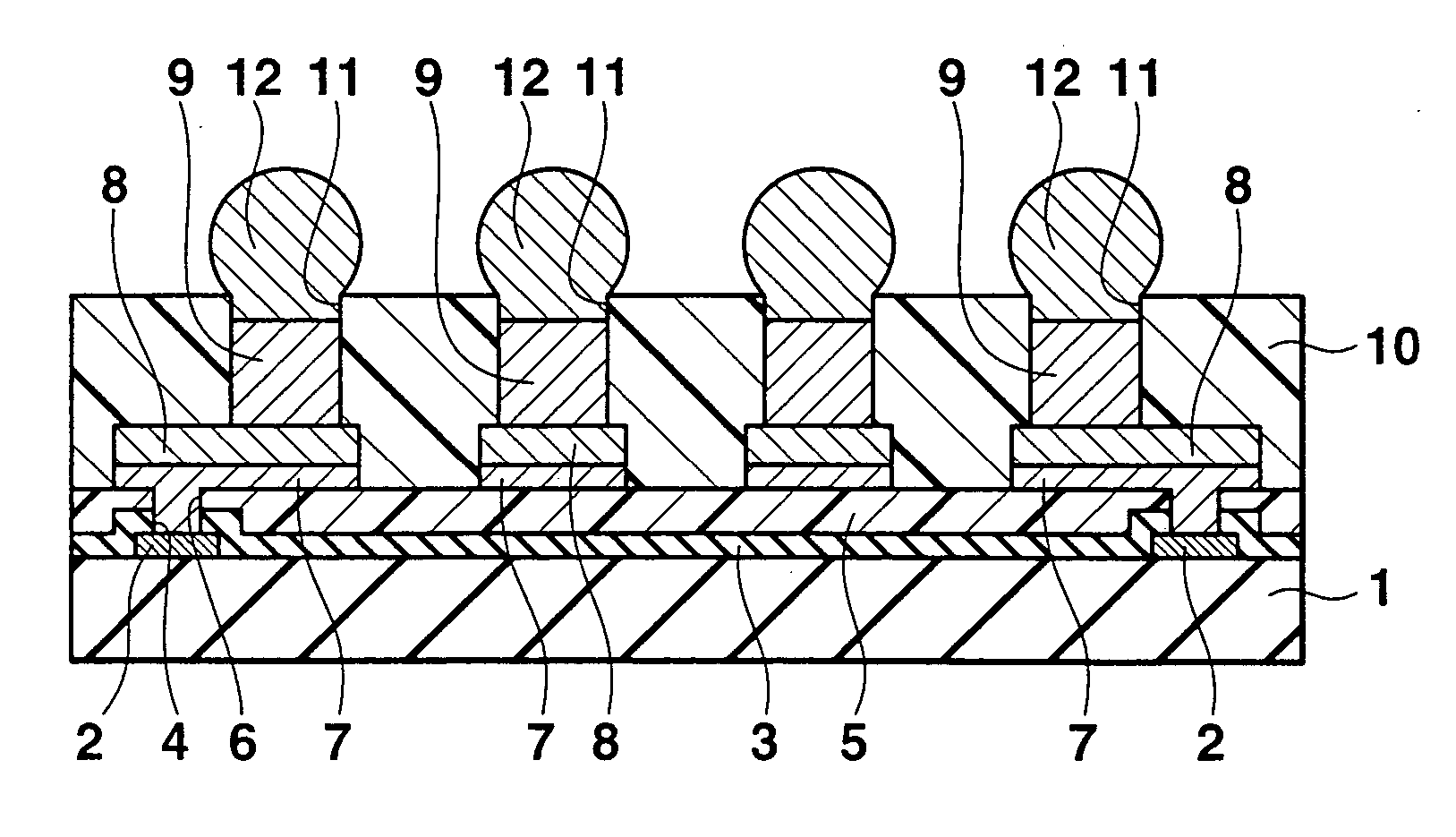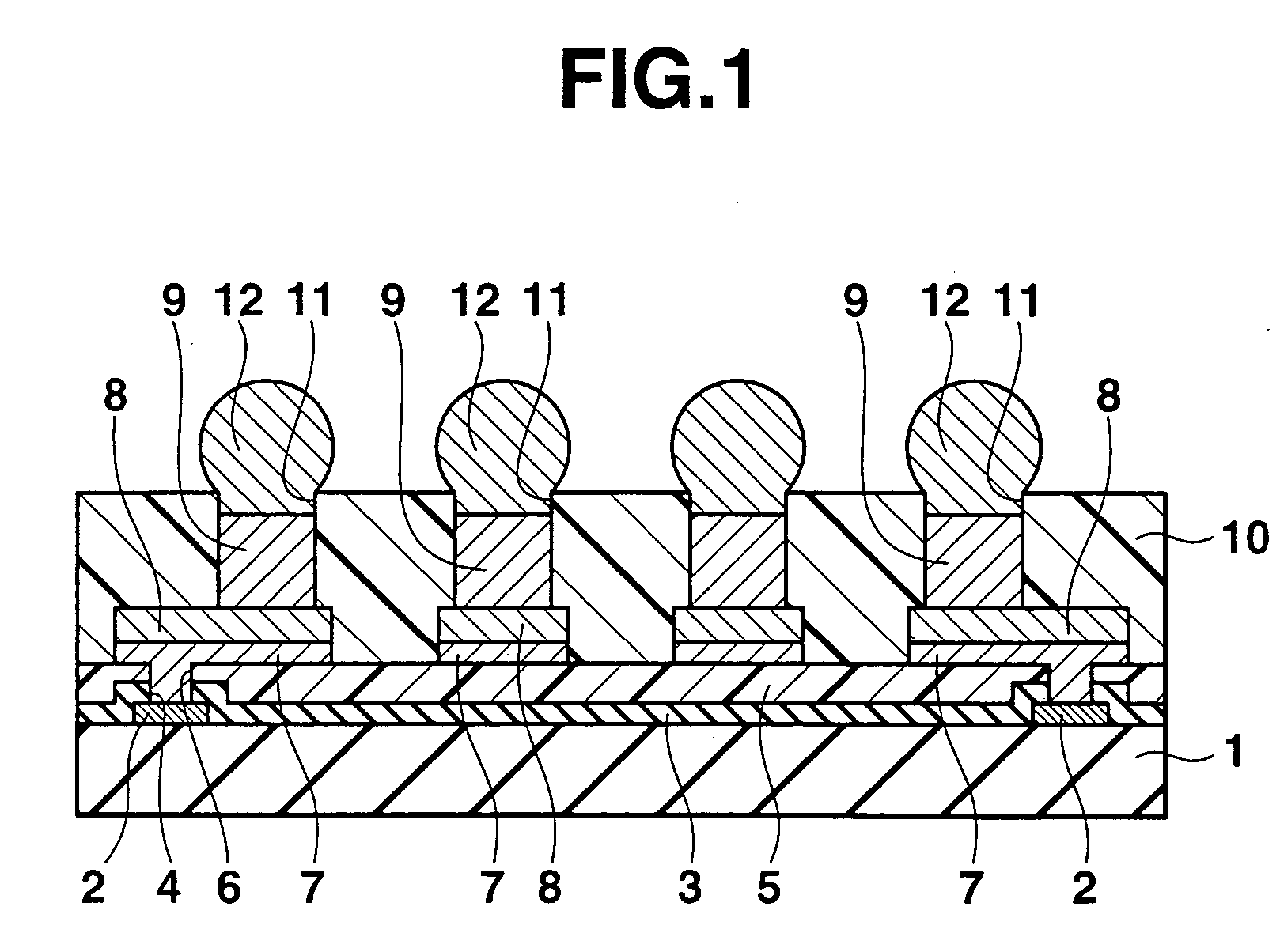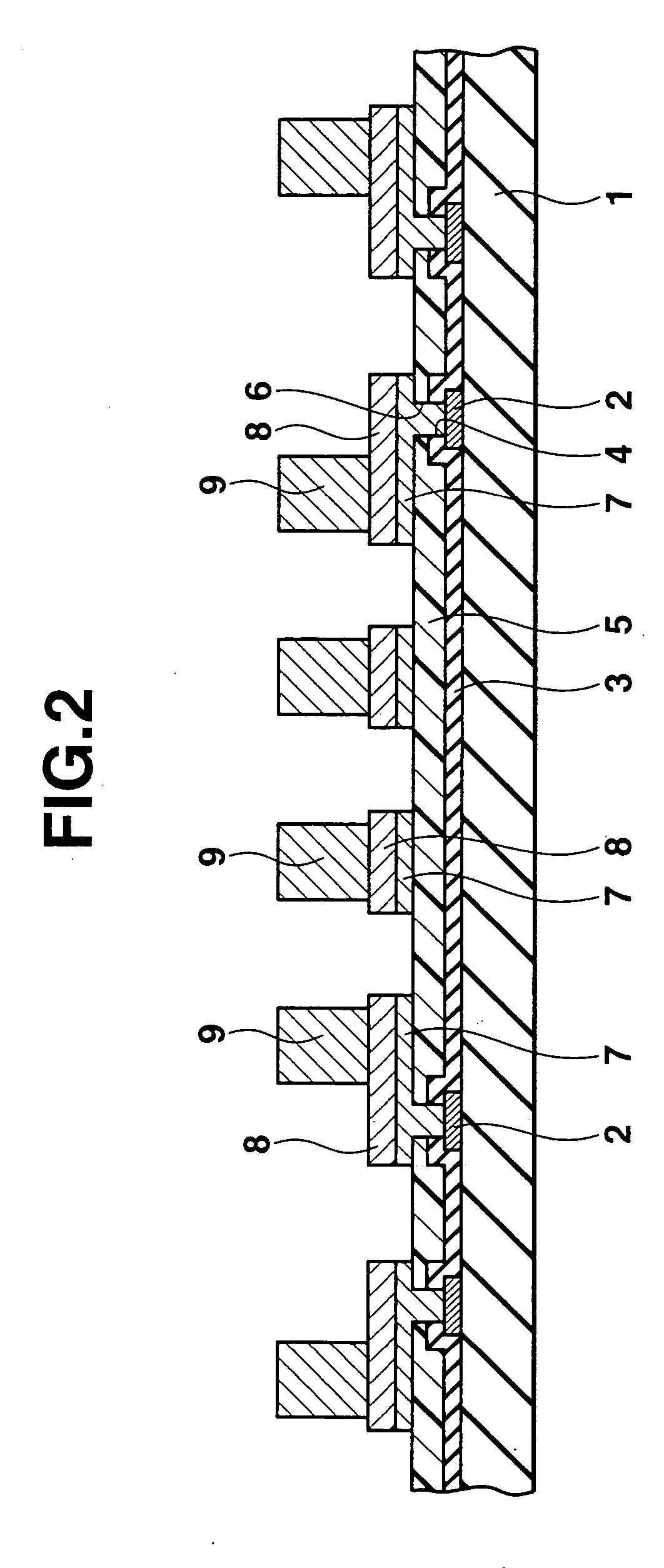Semiconductor device manufacturing method
a manufacturing method and semiconductor technology, applied in the direction of individual semiconductor device testing, semiconductor/solid-state device testing/measurement, instruments, etc., can solve the problems of low efficiency, solder ball position is erroneously recognized, solder ball deformation, etc., and achieve the effect of increasing the reliability of bonding
- Summary
- Abstract
- Description
- Claims
- Application Information
AI Technical Summary
Benefits of technology
Problems solved by technology
Method used
Image
Examples
Embodiment Construction
[0021]FIG. 1 is a sectional view of a semiconductor device manufactured by a manufacturing method according to an embodiment of the present invention. This semiconductor device comprises a semiconductor substrate or wafer 1 made of, for example, silicon. An integrated circuit (not shown) having a predetermined function is arranged on the upper surface of the semiconductor substrate 1. A plurality of connection pads 2 made of an aluminum-based metal are formed at the peripheral portion of the upper surface and electrically connected to the integrated circuit. An insulating film 3 made of silicon oxide is formed on the upper surface of the semiconductor substrate 1 except the central portions of the connection pads 2. The central portions of the connection pads 2 are exposed through opening portions 4 formed in the insulating film 3.
[0022] A protective film (insulating film) 5 made of epoxy resin or polyimide resin is formed on the upper surface of the insulating film 3. In this case...
PUM
 Login to View More
Login to View More Abstract
Description
Claims
Application Information
 Login to View More
Login to View More - R&D
- Intellectual Property
- Life Sciences
- Materials
- Tech Scout
- Unparalleled Data Quality
- Higher Quality Content
- 60% Fewer Hallucinations
Browse by: Latest US Patents, China's latest patents, Technical Efficacy Thesaurus, Application Domain, Technology Topic, Popular Technical Reports.
© 2025 PatSnap. All rights reserved.Legal|Privacy policy|Modern Slavery Act Transparency Statement|Sitemap|About US| Contact US: help@patsnap.com



